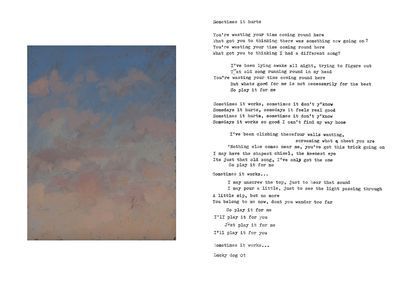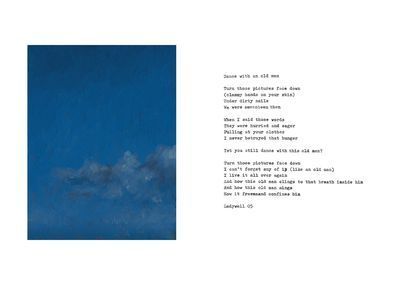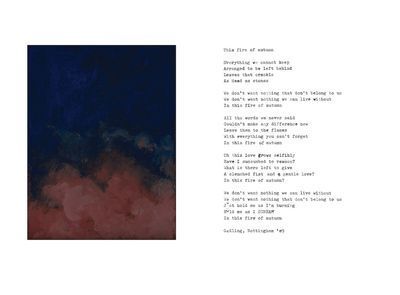Tindersticks and the painted sky
By MICHAEL CAINES
"Please do not read the lyrics whilst listening to the recordings." Jarvis Cocker has sometimes had to explain why that polite request has appeared in every album by Pulp bar one – the one in which the lyrics were not included. Why print them at all, then? These were albums that seemed to say the lyrics were worth reading (in silence) as well as listening to, a suggestion encouraged by Faber's eventual publication of a selection of Cocker's lyrics as Mother, Brother, Lover, which sets them out with characteristic reverence.
Deprived of the melody that enlivened them, collections of lyrics in print can often seem redundant, inert. Loretta Lynn's Honky Tonk Girl gets round that problem by becoming a kind of biography: it describes her "life in lyrics", the songs themselves being cushioned by reminiscences about being born in "them hills" or entering a talent contest run by Buck Owens ("I entered . . . and won me a watch!"). In a foreword, Elvis Costello describes working with her and turning over a piece of cardboard that fell out of a concertina file labelled "SONGS", and finding one of her most celebrated hits written on the back. The cardboard turns out to have been formerly part of the packaging for an item of underwear – "all that was available when inspiration struck".
Singing Skies (which appeared earlier this year) is different again, still personal, and rather beautiful. Its creators, Stuart A. Staples and Suzanne Osborne, are husband and wife: a songwriter who doesn't normally write down his song lyrics at all, and a painter who was keen to get back to work after an unproductive period of "stasis".
"Too many songs in my head", the songwriter grumbles in an introductory note to the book by way of explanation for its existence; he went out and bought a typewriter from a junk shop, to clatter out the ones he liked, plus others he didn't, attempting them only once each. So there's a spontaneity to them, which you can see in the vagaries of ink, spelling and spacing, at the same time as some of them are twenty years old.
The painter, meanwhile, for a year from September 18, 2010, undertook daily sky studies, as something that could be carried out wherever she went – anywhere from Istanbul or Limoges to Nottingham or Carlisle. They mainly emerged from her studio in France. As below, the book pairs one of these studies of Osborne's consistently available yet ever-changing subject, with a song by her husband that also ends with a place and a date:
As Stuart Staples says, this seems like a good use for an old song lyric: the processes of painting sky scenes (he watches his wife work "sometimes furiously to catch a moment in a fast-changing sky", tearing off a moment's inspiration) doesn't seem so different from that of writing songs. "I felt they belonged together." Realigned in Singing Skies, words and images seem to contemplate one another, without the connections between them seeming forced.
To extend the experience, you can try reading, say, "Dancing" while occasionally glancing over at the cumulus that happened to be passing that French studio at 6:30pm one October night a few years ago, and listening to Dancing, as recorded many years ago by Staples's band, the mighty Tindersticks. (Some TLS editors prefer to listen to some unstoppable force of narcissism; others like a spot of posthumous revenge; nothing wrong with either, I think, but sometimes it's good to hear something a little more melancholy.) I should have mentioned Tindersticks earlier, perhaps. Because they're the reason this book exists. A great band. A band who have worked with Isabella Rossellini and the French film director Claire Denis. And a songwriter is nothing without all kinds of collaborators, it seems . . . .
Peter Stothard's Blog
- Peter Stothard's profile
- 30 followers






